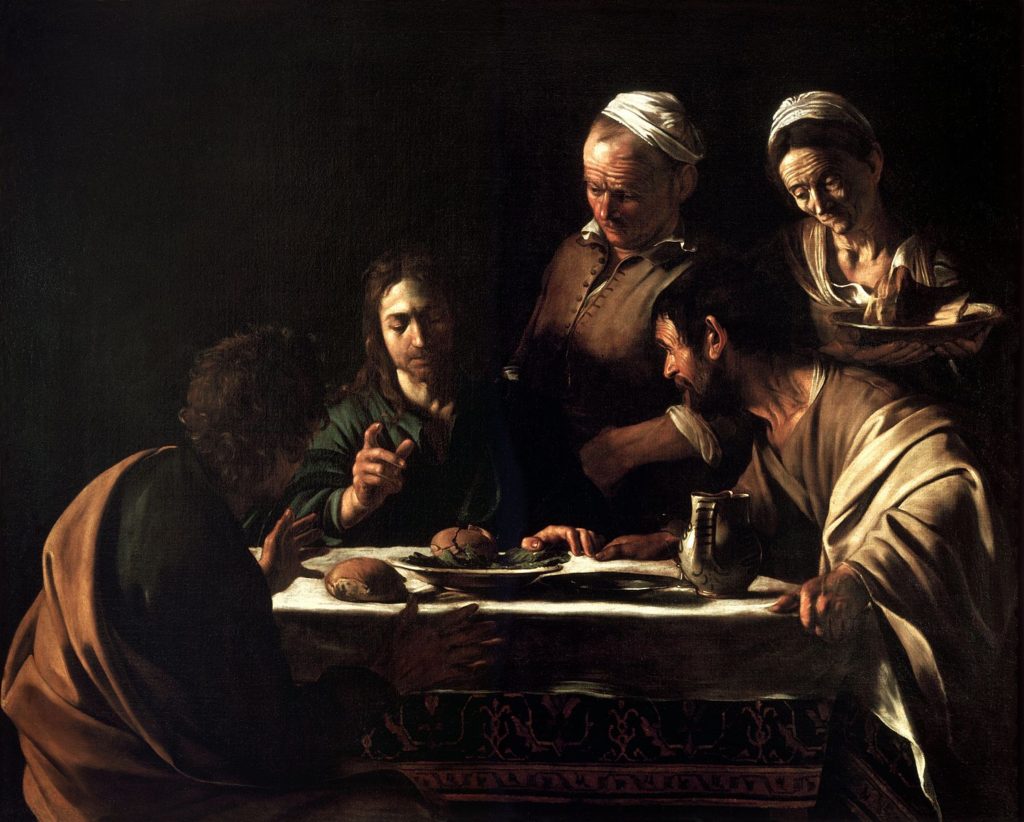Walking with the Lord

Easter week, or the Octave of Easter, begins on Easter Sunday and concludes on Quasimodogeniti one Sunday later. For the first eight centuries or so of the New Testament Church, Easter week was the only octave of the liturgical year, but over time the Church has also come to celebrate the octaves of Christmas, Epiphany, and Pentecost. Church services and celebrations flourish after the long Lenten fast, and Easter Monday kicks off the weekdays!
At the conclusion of Lent, the historical season of catechesis of new Christians, new members were received in baptism at the Easter Vigil and admitted to the Lord’s Supper. Naturally, the sermon for Easter Sunday took on a mystagogical tone, meaning that the pastor would instruct the people in the way of our Lord’s mysteries, the sacraments, which they had just received for the first time. After Sunday, Easter week was usually packed with services every day, and the sermons would continue laying out the lived reality of the Christian faith for these new converts. So it’s no surprise that the readings for Easter Monday give rich material for teaching!
In some sense, the account of the road to Emmaus, the text for Easter Monday, shows us a picture of the entire catechetical journey. The scene takes place on Easter day. Two of Jesus’ disciples are walking downcast toward Emmaus and discussing the events they had just witnessed. They had followed Jesus, they had been with him during his ministry and his week in Jerusalem, but then they saw their teacher tried and crucified. The one in whom they had put their hope was dead. They had no choice but to return home and try to go back to life as they knew it before.
Jesus joins them along the way and inquiries about these things that relate to himself. As they talk, Jesus starts to open up the Scriptures to them. He catechizes them. However, it isn’t until he reveals himself in the breaking of the bread—in the mystery of his body and blood—that the disciples’ eyes are opened. There is movement from the Christ in the Scriptures to his revelation in the sacraments to the disciples’ joy and urgency to share this wonderful news. And so they rush back to Jerusalem to meet up with the apostles.
The catechetical journey is just that: a journey. So in a way the account of the disciples on the road to Emmaus is a picture of our own catechetical journey because we too meet our Lord at his Divine Service, hear his Holy Word, have the scriptures opened to us, and receive the revelation of the resurrected Lord in our own bodies and on our lips in his precious Supper.

History
No outside feasts take place during Holy Week other than the days of Holy Week, and the Octave of Easter functions much the same way, with the eight days outranking any other solemnity or feast that might fall on these days. In this way, the Church has tried throughout the centuries to avoid any distractions from the unmitigated joy of Christ’s resurrection, making up for any lost feast days after the Octave is over.
There are a few unique traditions are attached to Easter Monday itself. In fact, you can look to nearly any European country and find a unique and interesting custom! For example, in Austria and southern Germany, Easter Monday might be spent partaking of the tradition of Emmausgang, a commemorative walk remembering our Lord’s walk to Emmaus with the two disciples in the traditional Gospel reading for Easter Monday. In Spain, you might enjoy the Easter king cake, a traditional Easter food called the Easter mona that is made for and given to one’s godchildren.
Collect
O God, who in the Paschal Feast hast bestowed restoration upon the world: continue unto Thy people Thy heavenly gift, that they may both attain unto perfect freedom and advance unto life eternal; through Jesus Christ, Thy Son, our Lord, who liveth and reigneth with Thee and the Holy Ghost: ever one God, world without end. Amen
Lessons
Resources
Propers found in Daily Divine Service Book: A Lutheran Daily Missal, edited by the Rev. Heath Curtis
References:
1. Pfatteicher, Philip H. Journey into the Heart of God. Oxford University Press. 2013.
2. Nouwen, Henri J.M. With Burning Hearts. Orbis Books. 2016.
Images:
1. Christ in Emmaus from The small Passion, Albrecht Dürer, Germany, 1511.
2. Supper at Emmaus, Michelangelo Merisi da Caravaggio, Italy, 1606.
Some links might be affiliate links which means we may receive a small commission at no extra cost to you. As an Amazon Associate we earn from qualifying purchases.



[…] distinctive element the Easter mona is that it is a traditional food tied to Easter Monday (not just Easter in general) and is given as a gift from godparents to godchildren. As for the […]